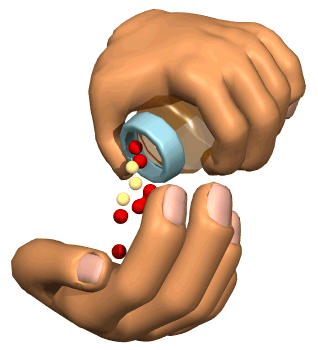Ebola virus disease.

Ebola virus disease (EVE) is a serious disease, often fatal in humans. The virus was first detected in 1976 in two simultaneous outbreaks in Nzara (today's Southern Sudan) and Yambuku (Democratic Republic of the Congo) in two simultaneous outbreaks. The village in which the second was produced is located near the river Ebola, which gives its name to the virus.
The 2014-2016 ebola outbreak in West Africa was the largest and most complex since the virus was discovered in 1976. There were more cases and more deaths in this outbreak than in all the others combined. It also spread to different countries: it started in Guinea and then spread across land borders to Sierra Leone and Liberia.
The genus Ebolavirus is, together with the genera Marburgvirus and Cuevavirus, one of the three members of the family Filoviridae (filovirus). Five different species have been identified in the genus Ebolavirus:
- Bundibugyo ebolavirus (BDBV);
- Zaire ebolavirus (EBOV);
- Reston ebolavirus (RESTV);
- ebolavirus Sudan (SUDV), and
- Taï Forest ebolavirus (TAFV).

Ebola Transmission
Because the natural reservoir of ebolaviruses has not yet been demonstrated, the way in which the virus first appears in a human being at the onset of an outbreak is unknown. However, researchers have hypothesized that the first patient is infected through contact with an infected animal.
When an infection occurs in humans, there are several ways in which the virus can be transmitted to others. These include:
Direct contact with the blood or secretions of an infected person
Exposure to objects (such as needles) that have been contaminated with infected secretions
Viruses that cause Ebola hemorrhagic fever often spread through family and friends, since they live in direct contact with infectious secretions in the care of sick people.
During outbreaks of ebola hemorrhagic fever, the disease can spread rapidly in health care settings (for example, a clinic or hospital). Exposure to ebolavirus can occur in health care settings where hospital staff are not wearing appropriate protective equipment, such as masks, gowns, and gloves.
Proper cleaning and disposal of instruments such as needles and syringes is also important. If the instruments are not disposable, they must be sterilized before reuse. Without proper sterilization of instruments, virus transmission can continue and amplify an outbreak.

Ebola symptoms
Because the natural reservoir of ebolaviruses has not yet been demonstrated, the way in which the virus first appears in a human being at the onset of an outbreak is unknown. However, researchers have hypothesized that the first patient is infected through contact with an infected animal.
When an infection occurs in humans, there are several ways in which the virus can be transmitted to others. These include:
Direct contact with the blood or secretions of an infected person
Exposure to objects (such as needles) that have been contaminated with infected secretions
Viruses that cause Ebola hemorrhagic fever often spread through family and friends, since they live in direct contact with infectious secretions in the care of sick people.
During outbreaks of ebola hemorrhagic fever, the disease can spread rapidly in health care settings (for example, a clinic or hospital). Exposure to ebolavirus can occur in health care settings where hospital staff are not wearing appropriate protective equipment, such as masks, gowns, and gloves.
Proper cleaning and disposal of instruments such as needles and syringes is also important. If the instruments are not disposable, they must be sterilized before reuse. Without proper sterilization of instruments, virus transmission can continue and amplify an outbreak.

Ebola diagnosis
Patient symptoms and a thorough interrogation including questions about recent travel to endemic areas of the Ebola virus, malaria or influenza are of vital importance in elucidating the diagnosis of Ebola virus infection.
Specific laboratory tests are available to detect the presence of the Ebola virus in blood or serum, especially in the acute phase, such as genomic or subgenomic RNA determination; however, the most common technique to determine infection by this virus is the detection of IgM and IgG antibodies by the ELISA capture method or sandwich, this technique is an immunological test that is based on the capture.
Other laboratory tests such as a blood count may provide evidence of infection, such as white blood cells that are often decreased (leukopenia). The elevation of the hematocrit number can also be observed, which is an indirect measure of the patient's dehydration status and the platelets involved in clotting, which are diminished (thrombocytopenia). More than half of the affected patients develop some degree of bleeding.

Treatment and vaccines
Supportive treatment - rehydration with oral or intravenous fluids - and treatment of certain symptoms improve survival. There is still no proven treatment, but several forms of haemotherapy, immunotherapy and pharmacotherapy are being evaluated. There are also not yet any vaccines approved for ebola, but two potential candidate vaccines are being evaluated.
An experimental vaccine, called rVSV-ZEBOV, has been shown to provide great protection against this deadly virus in a large-scale clinical trial (11,841 subjects) in Guinea in 2015. Among the 5837 subjects who received the vaccine there were no cases of ebola 10 or more days after vaccination, while among those who did not receive the vaccine there were 23 cases.
The study, led by WHO together with the Ministry of Health of Guinea, Médecins sans Frontières and the Norwegian Institute of Public Health, involved other international partners. A "ring"vaccination protocol was chosen, in which some "rings" were vaccinated shortly after detection of one case, and the other "rings" were vaccinated within 3 weeks.
Prevention and control

Good outbreak control depends on the implementation of different interventions, such as case management, surveillance and tracing of cases, safe burials or social mobilization. Community involvement is critical to the success of outbreak control. Raising awareness of risk factors for Ebola virus infection and protective measures (including vaccination) is an effective means of reducing human transmission. Messages to reduce risks should focus on the following aspects:
Reduce the risk of transmission of wild animals to humans as a result of contact with bats of infected fruit or monkeys or apes and consumption of raw meat. Gloves and other protective clothing appropriate for handling animals should be worn. Your products (blood and meat) must be well cooked before eating them.
Reduce the risk of person-to-person transmission in the community as a result of direct or close contact with infected patients, especially their body fluids.
Close physical contact with patients with EVS should be avoided and gloves and appropriate personal protective equipment should be worn to care for patients at home. You should wash your hands regularly after visiting sick people in the hospital, as well as after taking care of sick people at home.Reduce the risk of possible sexual transmission. Based on further analysis of the ongoing research and considerations from its Advisory Panel on Ebola Disease Response, WHO recommends that men who survive Ebola Disease Response should have safe sexual and hygienic practices for 12 months after onset of symptoms or until their semen samples are twice negative for Ebola virus. Avoid contact with body fluids and wash with soap and water. WHO does not recommend isolating convalescent patients of both sexes once their blood samples have tested negative for Ebola virus.
- Measures to contain outbreaks. These include the rapid and safe burial of infected corpses, the identification of persons who may have been in contact with someone infected with the virus, and their observation for 21 days. Separation from patients and healthy people is also important to prevent further spread, maintain good hygiene and cleanliness of the environment.
Source information
http://www.who.int/mediacentre/factsheets/fs103/en/
https://www.cdc.gov/vhf/ebola/about.html
https://www.mayoclinic.org/diseases-conditions/ebola-virus/symptoms-causes/syc-20356258
https://www.medicinenet.com/script/main/art.asp?articlekey=6518
.gif)